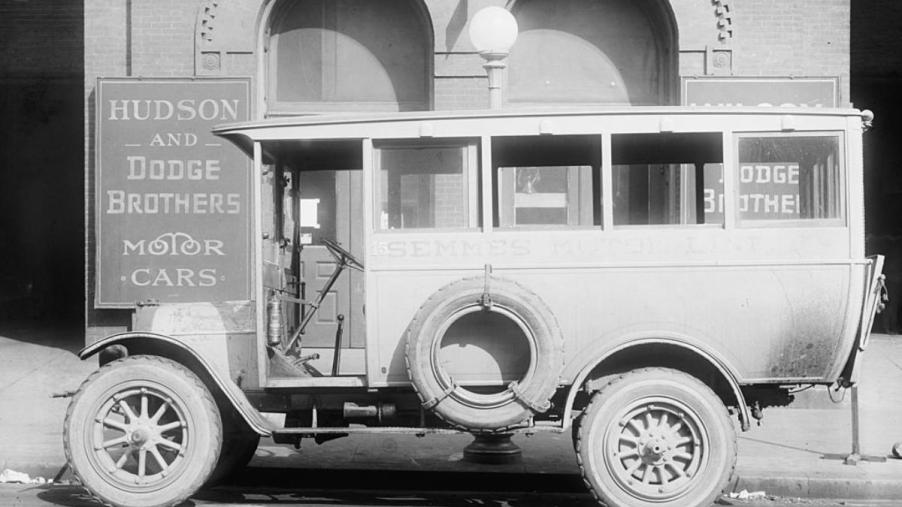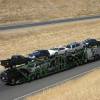
What Was the First Car Dodge Ever Made?
Dodge has been around since 1914, but the brothers that started the brand got their start in bicycles. Unfortunately, they were never able to see how successful their efforts proved to be, but their innovation and forward-thinking inspired the entire Dodge line 100 years later. Here, we will take a look at the first Dodge ever built and how it would eventually lead to some of Dodge’s most iconic vehicles.
The first Dodge car ever built
On November 14, 1914, the first Dodge ever rolled off the assembly line, according to the Reed Brothers. On that day, the Dodge Brothers (Horace and John) took the first ride in a car that bears their name. Prior to this, the Dodge brothers were both successful in the bicycle industry, but they sold their interest in their bicycle business to invest in the up-and-coming form of transportation, cars.
They opened Detroit’s first largest machine shop and began producing parts for the Ford Motor Company. As part of this collaboration, they prepared production drawings and mechanical parts and dedicated their whole shop of 135 employees to the Ford endeavor, giving them a 10% stake in the Ford Company.
However, the brothers decided to take the knowledge they gained from this experience and venture out on their own. After the debut of “Old Betsy” in 1914, by the end of the year, a total of 249 Dodge vehicles had been constructed.
‘Old Betsy’ ushers in an era for Dodge
According to Sid Dillon, Dodge was the third best-selling carmaker in America in 1915. In 1916, Dodge delivered 150 automobiles to the United States Army. The rest of that decade saw the debut of the first Dodge commercial vehicle in 1917 with manufacturing reaching over 60,000 units in 1918. In 1919, only five years after manufacturing began, the company built its 400,000th automobile.
The success of the first Dodge car laid the foundation for the company’s future iconic vehicles. Dodge’s commitment to innovation in engineering, design, and technology led to some of the most iconic Dodge models from the Durango SUV to muscle cars such as the Charger and the Challenger.
How Dodge has evolved over the years
Unfortunately, the brothers were casualties of the influenza pandemic and both died in 1920. Despite the passing of its founders, by 1921 Dodge was the second best-selling brand in America with production for that year topping over 81,000 units. In 1925, one of their wives sold Dodge Brothers Company for $146 million. In 1928, Walter Chrysler of the Chrysler Corporation purchased Dodge for $170 million. However, they kept the name.
Dodge successfully navigated the Great Depression of the ’30s, and in fact, celebrated its three-millionth vehicle produced in 1935 and its 25th anniversary in 1939. In 1941, Dodge along with many other domestic car producers, halted domestic production to support the war effort.
The ’60s ushered in the Dodge Dart in 1960, the Dodge Charger concept and its 50th anniversary in 1964, and the return of the Coronet in 1965.
The ’70s was an important year for Dodge. When the gas prices hit record highs in the ’70s, Dodge responded by introducing smaller, more gas-efficient models. 1970 also saw the release of the Dodge Challenger and the Dart Demon in 1972, renamed the Dart Sport in 1973. The Dodge brand became synonymous with speed when Richard Petty won the Daytona 500 behind the wheel of a Charger in 1974.
In 1991, a pre-production version of the Viper was used as the pace car for the Indianapolis 500 with the production version being released in 1992. By the time they reached their 100th anniversary in 2014, Dodge was America’s fastest-growing automaker.
These days, the company looks to an electrified future, which is something a number of car manufacturers are doing. Dodge has unveiled the Charger Daytona SRT, a fully electric muscle concept car that previews what will be produced in 2024. The 2024 Dodge Hornet R/T is also being introduced with Plug-in Hybrid Electric (PHEV) capability.
It’s hard to imagine the Dodge brothers would ever see a day when their vehicles would be driven by electricity, but the company has been about innovating and changing with the times since the beginning when “Old Betsy” first rolled off the line.


